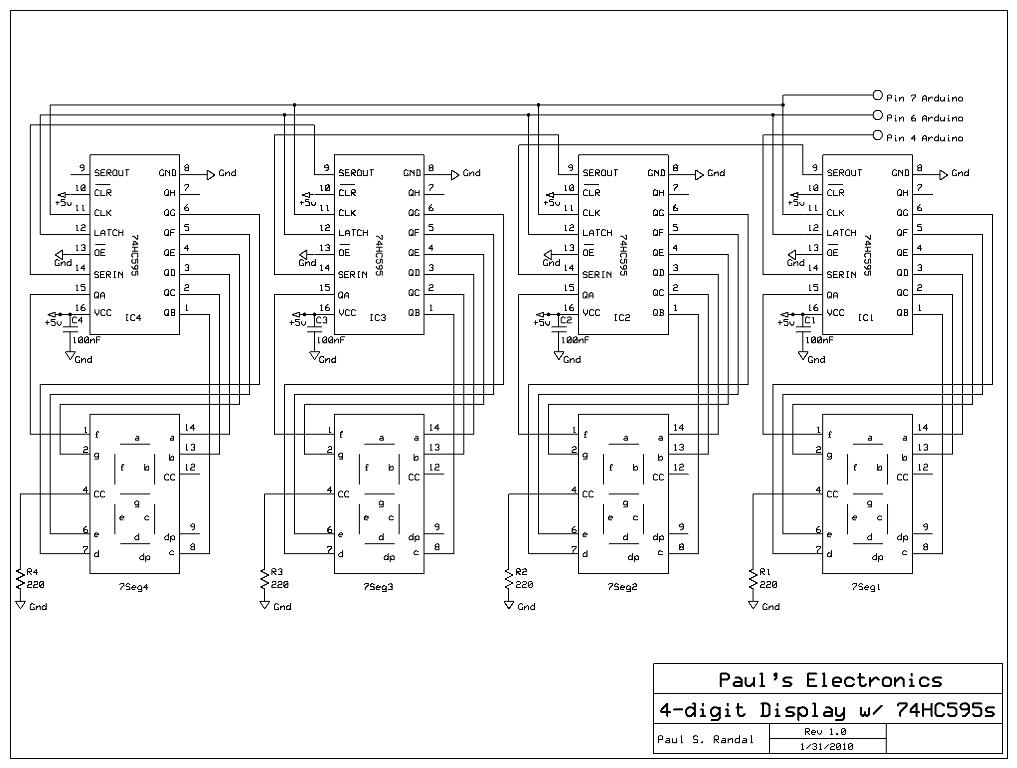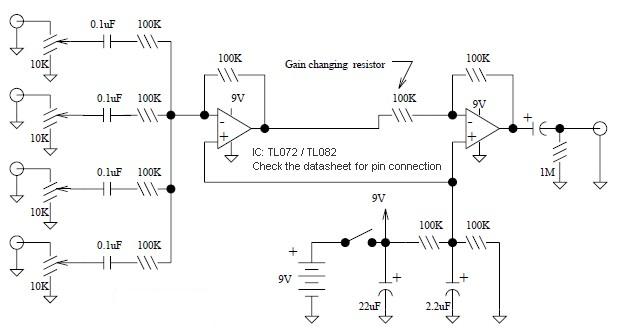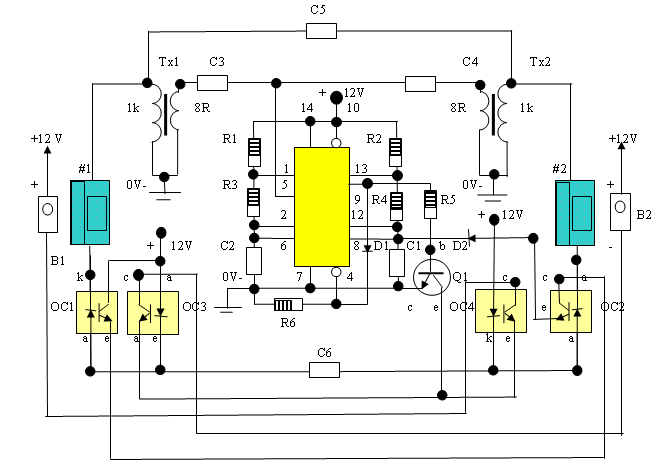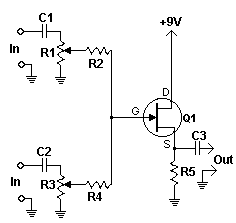
4 input Portable Mixer
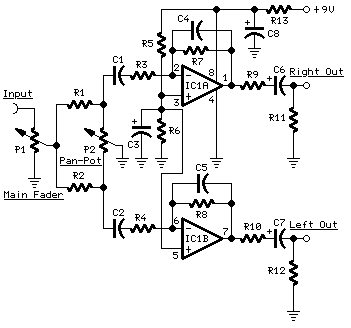
The target of this project was the design of a small portable mixer supplied by a 9V PP3 battery, keeping high quality performance. The mixer is formed assembling three main modules that can be varied in number and/or disposition to suit everyone needs. More: The three main modules are: Input Amplifier Module: a low noise circuit equipped with a variable voltage-gain (10 - 100) pre-set, primarily intended as high quality microphone input, also suitable for low-level line input. Tone Control Module: a thr
The described portable mixer consists of three primary modules, each designed to enhance audio processing capabilities while maintaining a compact form factor suitable for battery operation.
The Input Amplifier Module serves as the initial stage of the signal processing chain. It is designed to amplify audio signals from microphones or low-level line sources. This module features a low-noise operational amplifier to minimize unwanted noise and interference, ensuring high-quality audio output. The variable voltage-gain control, adjustable between 10 and 100, allows users to tailor the amplification level according to the source signal strength, enhancing versatility in various applications. The circuit may include a gain control potentiometer, capacitive coupling to eliminate DC offsets, and appropriate input and output filtering to maintain signal integrity.
The Tone Control Module is intended to provide users with the ability to shape the audio signal's frequency response. Although the description is truncated, this module typically includes a series of passive and active components configured to adjust bass, midrange, and treble frequencies. Common implementations involve using potentiometers to allow for user-defined adjustments, along with capacitors and resistors to define the cutoff frequencies for each band. This module may utilize a standard tone control circuit topology, such as a Baxandall or a shelving filter design, to achieve the desired tonal characteristics.
The third module, which is not described in detail, could encompass various functionalities such as a mixer section for blending multiple audio inputs, an effects processing unit, or a final output stage for driving speakers or recording devices. Each module can be customized in terms of quantity and layout, allowing for a tailored design that meets specific user requirements.
The entire mixer is powered by a 9V PP3 battery, providing portability and ease of use in various settings, from live performances to studio recordings. The design consideration for battery operation necessitates efficient power management to prolong battery life while ensuring that audio quality remains uncompromised.The target of this project was the design of a small portable mixer supplied by a 9V PP3 battery, keeping high quality performance. The mixer is formed assembling three main modules that can be varied in number and/or disposition to suit everyone needs.
The three main modules are: Input Amplifier Module: a low noise circuit equipped with a variable voltage-gain (10 - 100) pre-set, primarily intended as high quality microphone input, also suitable for low-level line input. Tone Control Module: a thr 🔗 External reference
The described portable mixer consists of three primary modules, each designed to enhance audio processing capabilities while maintaining a compact form factor suitable for battery operation.
The Input Amplifier Module serves as the initial stage of the signal processing chain. It is designed to amplify audio signals from microphones or low-level line sources. This module features a low-noise operational amplifier to minimize unwanted noise and interference, ensuring high-quality audio output. The variable voltage-gain control, adjustable between 10 and 100, allows users to tailor the amplification level according to the source signal strength, enhancing versatility in various applications. The circuit may include a gain control potentiometer, capacitive coupling to eliminate DC offsets, and appropriate input and output filtering to maintain signal integrity.
The Tone Control Module is intended to provide users with the ability to shape the audio signal's frequency response. Although the description is truncated, this module typically includes a series of passive and active components configured to adjust bass, midrange, and treble frequencies. Common implementations involve using potentiometers to allow for user-defined adjustments, along with capacitors and resistors to define the cutoff frequencies for each band. This module may utilize a standard tone control circuit topology, such as a Baxandall or a shelving filter design, to achieve the desired tonal characteristics.
The third module, which is not described in detail, could encompass various functionalities such as a mixer section for blending multiple audio inputs, an effects processing unit, or a final output stage for driving speakers or recording devices. Each module can be customized in terms of quantity and layout, allowing for a tailored design that meets specific user requirements.
The entire mixer is powered by a 9V PP3 battery, providing portability and ease of use in various settings, from live performances to studio recordings. The design consideration for battery operation necessitates efficient power management to prolong battery life while ensuring that audio quality remains uncompromised.The target of this project was the design of a small portable mixer supplied by a 9V PP3 battery, keeping high quality performance. The mixer is formed assembling three main modules that can be varied in number and/or disposition to suit everyone needs.
The three main modules are: Input Amplifier Module: a low noise circuit equipped with a variable voltage-gain (10 - 100) pre-set, primarily intended as high quality microphone input, also suitable for low-level line input. Tone Control Module: a thr 🔗 External reference
